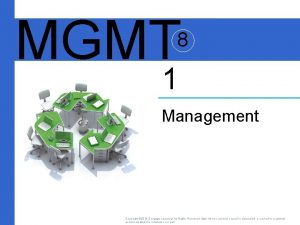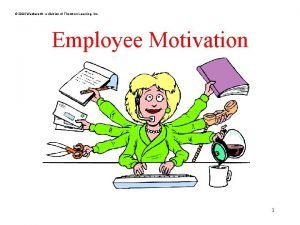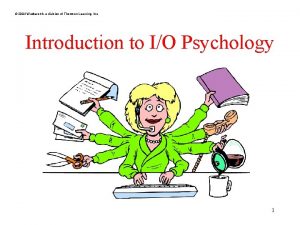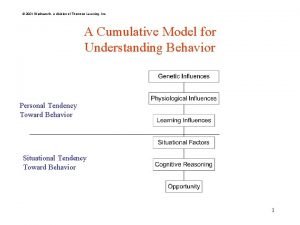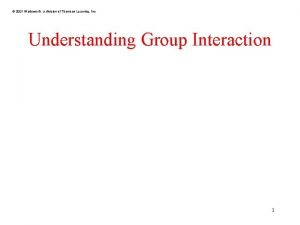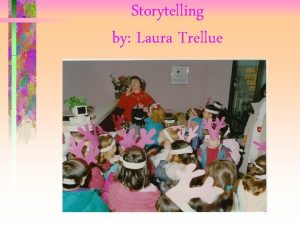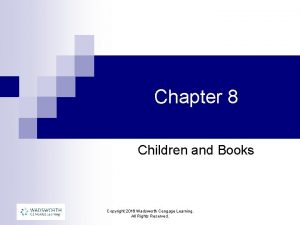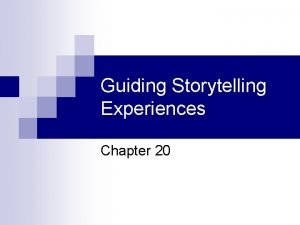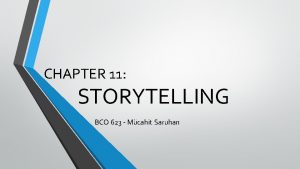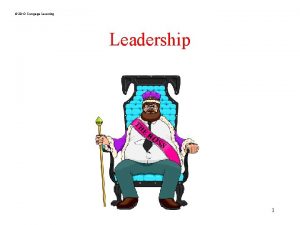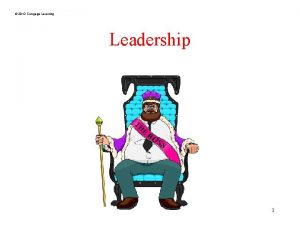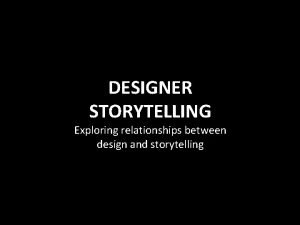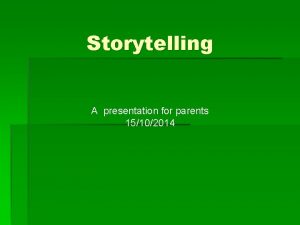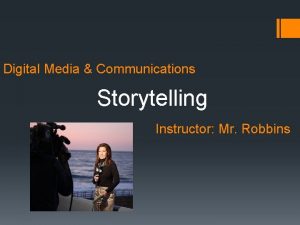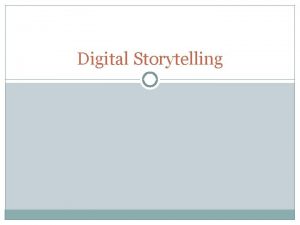Chapter 9 Storytelling Copyright 2016 Wadsworth Cengage Learning

















- Slides: 17

Chapter 9 Storytelling Copyright 2016 Wadsworth Cengage Learning. All Rights Reserved.

Chapter Highlights A. Storytelling and Literacy B. Sources for Stories C. Story Selection D. Practice and Preparation 1. Techniques E. Taking Child Dictation F. Parents, Volunteers, Community Storytellers Copyright 2016 Wadsworth Cengage Learning. All Rights Reserved.

Objectives n In this chapter, we will investigate: ¨ How storytelling can help language growth ¨ Teacher techniques in storytelling ¨ The ability to create a story that meets suggested criteria ¨ Promotion of child-created stories Copyright 2016 Wadsworth Cengage Learning. All Rights Reserved.

Storytelling n n A medium teachers can use to develop and increase language enjoyment in children Used to pass on the customs, wisdom, traditions, songs, and legend of many cultures Copyright 2016 Wadsworth Cengage Learning. All Rights Reserved.

Storytelling Helps Language Growth n When children listen to teacher’s storytelling, they notice: ¨ Common n elements Story beginnings, middles, and endings ¨ Hand body gesturing, facial expression, and vocal variation ¨ Dialogue Copyright 2016 Wadsworth Cengage Learning. All Rights Reserved.

Storytelling Helps Children n n To build imagination, creativity, and thinking skills To promote the development of a sense of: ¨ Personal story, drama ¨ Curiosity about other stories ¨ Phonemic awareness ¨ Cultural similarities and differences Copyright 2016 Wadsworth Cengage Learning. All Rights Reserved.

Teacher Techniques (1 of 3) n A teacher’s voice is important. ¨ Can n increase the drama in the story Implement well-defined teacher goals. ¨ Increasing children’s enjoyment ¨ Exposure to storytelling ¨ Increasing vocabulary and story elements Copyright 2016 Wadsworth Cengage Learning. All Rights Reserved.

Teacher Techniques (2 of 3) n n n Using picture books Including multicultural materials Building your resources ¨ n Books, magazine, films, story records Using story songs Copyright 2016 Wadsworth Cengage Learning. All Rights Reserved.

Teacher Techniques (3 of 3) n Storybook discussions (Justice and Pence, 2006): ¨ Sequence of story events ¨ Characters ¨ Setting ¨ Characters’ speech ¨ High point of a story Copyright 2016 Wadsworth Cengage Learning. All Rights Reserved.

Focus on Appropriate Selection n n n Age-level appropriateness Plot, style, values Memorable characters Sensory and visual images Quality, a universal truth, suspense Theme and story structure Storyteller enthusiasm Copyright 2016 Wadsworth Cengage Learning. All Rights Reserved.

Types of Stories n Fable ¨A simple story in which animals point out lessons (morals) n Participation story ¨ Active involvement using props, pictures, costumes, etc. n n Classic tales, Aesop’s fables Traditional stories Copyright 2016 Wadsworth Cengage Learning. All Rights Reserved.

Other Teacher Techniques n Practicing and preparing ¨ Memorize n n n certain parts, write others on cards Selecting appropriate settings Telling the story in your own words Maintaining eye contact Use gestures when appropriate Involve the children Copyright 2016 Wadsworth Cengage Learning. All Rights Reserved.

Five Key Elements n Good teacher story ¨ Audience ¨ Content ¨ Motivation ¨ Timing ¨ Semiotics Copyright 2016 Wadsworth Cengage Learning. All Rights Reserved.

Child-Created Stories n n Monologue: literally “speaking alone” Complex cognitive endeavor ¨ Exposure to stories helps children develop their own stories. ¨ Teacher storytelling and child authorship go hand-in-hand. Copyright 2016 Wadsworth Cengage Learning. All Rights Reserved.

Promoting Child-Created Stories n n n Comprehension—a very important piece Story and story map—key terms Use of picture files to motivate creativity Use of story sequence cards by teacher and child Dictation Focus on reaching reluctant storytellers Copyright 2016 Wadsworth Cengage Learning. All Rights Reserved.

Storytelling with Limited-English Speakers n n n Encourage pantomimes of daily routines. Allow the use of words in English and the native language. Encourage the use of props. Copyright 2016 Wadsworth Cengage Learning. All Rights Reserved.

Other Storytellers n Many are excited about sharing stories with children. ¨ Great way to promote diversity ¨ Guidelines must be established prior ¨ Volunteers ¨ Community members ¨ Storytelling clubs and associations Copyright 2016 Wadsworth Cengage Learning. All Rights Reserved.
 Wadsworth cengage learning
Wadsworth cengage learning 2016 cengage learning
2016 cengage learning Cengage chapter 7
Cengage chapter 7 Wadsworth thomson learning
Wadsworth thomson learning Wadsworth/thomson learning
Wadsworth/thomson learning Thomson wadsworth
Thomson wadsworth Thomson learning inc
Thomson learning inc Chapter 13 medical math assignment sheet
Chapter 13 medical math assignment sheet Cengage learning chapter 7 answers
Cengage learning chapter 7 answers Chapter 6:2 interpreting word parts
Chapter 6:2 interpreting word parts Medical terminology chapter 5 learning exercises answers
Medical terminology chapter 5 learning exercises answers Cengage learning heart diagram
Cengage learning heart diagram South-western cengage learning
South-western cengage learning 2009 delmar cengage learning
2009 delmar cengage learning Cengage learning heart diagram
Cengage learning heart diagram Chapter 1 matching medical terminology
Chapter 1 matching medical terminology Cengage learning australia
Cengage learning australia 2009 delmar cengage learning
2009 delmar cengage learning

